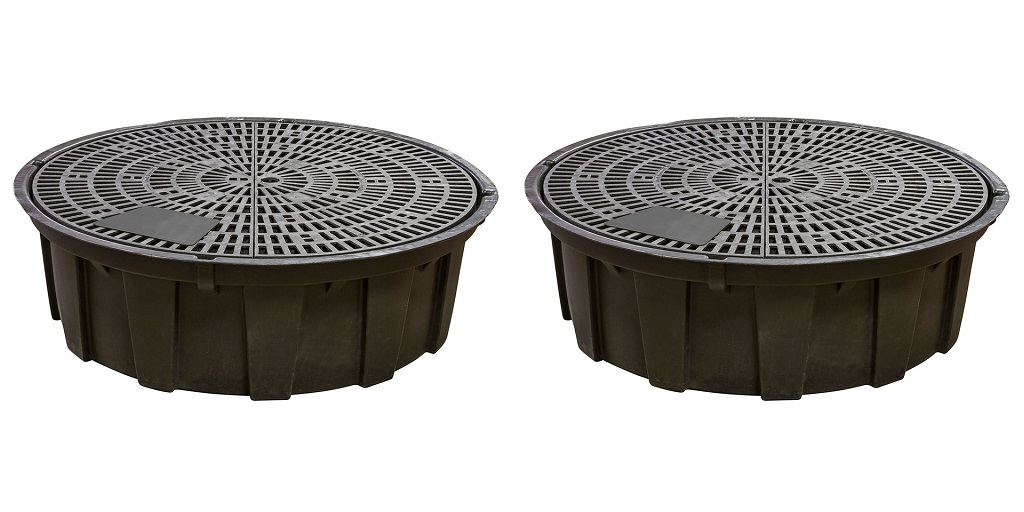
If you have a large outdoor area or garden, adding a water feature is often a great addition. However, this means you need a reservoir so your water feature can function properly.
A fountain reservoir is an essential component of many garden fountains and water features. It serves as the holding tank or basin that collects and stores water, allowing the fountain to operate efficiently and effectively. Understanding the role of a fountain reservoir and its benefits can help you design and maintain a successful garden water feature.
What is a Fountain Reservoir?
A fountain reservoir is a container designed to collect and store water for use in a fountain or water feature. It acts as the foundation for the fountain’s water circulation system, ensuring a continuous supply of water to the fountain’s pump and other components.
Reservoirs come in various shapes, sizes, and materials, depending on the design of the fountain and the specific needs of the garden. It functions in different ways for any water feature. This includes the following:
Water Storage
The primary function of a fountain reservoir is to hold a sufficient amount of water for the fountain to operate. It ensures that there is enough water to feed the pump and maintain the desired water flow or spray.
Water Circulation
The reservoir supports the water circulation system by providing a stable source of water. It helps to maintain a consistent water level, which is crucial for the proper functioning of the fountain pump and other mechanisms.
Pump Protection
The reservoir provides a protective environment for the fountain pump. Keeping the pump submerged in water allows the reservoir to prevent overheating and ensures that the pump operates efficiently.
Debris Collection
Reservoirs often have a design that allows for the collection of debris and sediment. This helps to keep the main fountain feature cleaner and reduces the frequency of maintenance required.
Why You Need a Fountain Reservoir in Your Garden
Ensures Continuous Operation
A well-designed reservoir ensures that your fountain can operate continuously without interruption. By providing a consistent supply of water, the reservoir prevents the pump from running dry, which can cause damage or malfunction.
This is especially important for maintaining the visual appeal and functionality of your fountain.
Reduces Maintenance
Having a reservoir helps to simplify the maintenance of your garden fountain. The reservoir collects debris and sediment, which can be easily removed during routine cleaning. This reduces the amount of debris that enters the fountain’s water feature, minimizing the need for frequent cleaning and repairs.
Prevents Water Loss
In outdoor settings, fountains are exposed to various environmental factors, such as evaporation and splashing. A reservoir helps to mitigate water loss by capturing and storing water that might otherwise be lost. This ensures that your fountain remains operational even in hot or windy conditions.
Enhances Aesthetic Appeal
A fountain reservoir contributes to the overall design and aesthetic appeal of your garden. It provides a hidden or discreet area where the mechanics of the fountain are housed, allowing the focus to remain on the beauty and function of the water feature itself.
Reservoirs can be designed to blend seamlessly with the garden landscape, enhancing the visual harmony of the space.
Facilitates Water Recycling
Many modern garden fountains are designed to be eco-friendly by recycling water. The reservoir plays a crucial role in this process by collecting and returning water to the fountain system. This recycling process reduces water consumption and minimizes the environmental impact of the fountain.
Supports Aquatic Life
In some garden fountains, especially those with larger reservoirs, the water feature can support aquatic life, such as fish or plants. The reservoir provides a stable environment for these organisms, contributing to the ecological balance of the garden. It also allows for the integration of filtration systems that help maintain water quality.
Choose the Right Fountain Reservoir
A fountain reservoir is a vital component of garden water features, providing water storage, circulation, and protection for the fountain pump. It enhances the functionality and aesthetic appeal of the fountain while reducing maintenance and water loss.
Choose the right reservoir so you can ensure that your garden fountain remains a beautiful and enjoyable feature for years to come.


